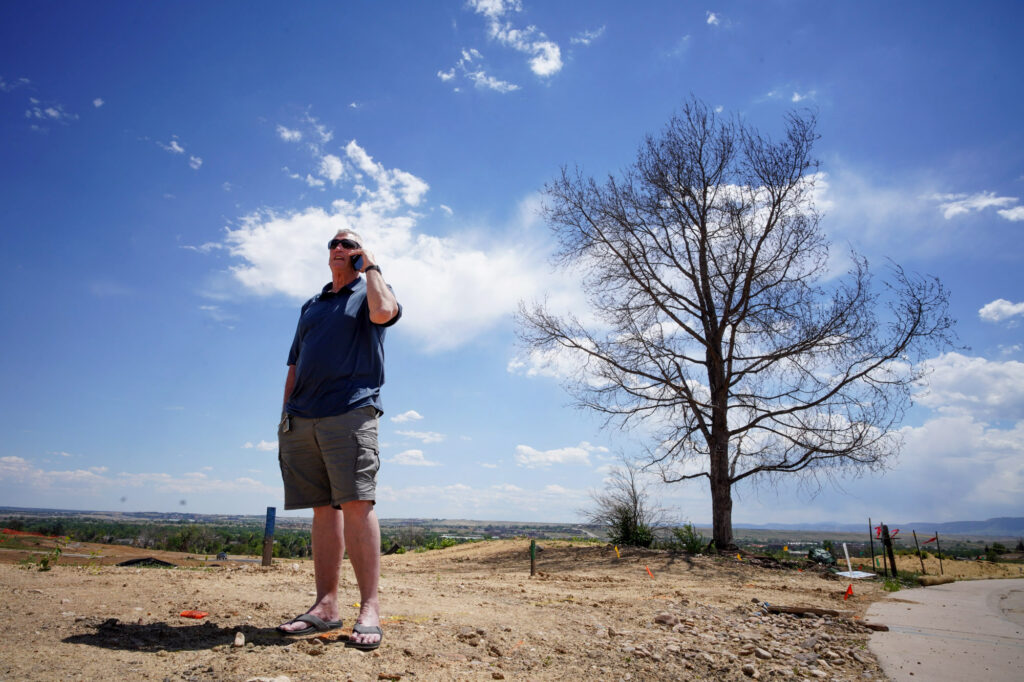They lost their home in the Marshall fire. Here’s where they stand six months later.
[ad_1]
Kenn Atkinson, Superior, Colo.
 Hart Van Denburg/CPR News
Hart Van Denburg/CPR NewsKenn Atkinson, a project specialist for Denver Public Schools, moved from New Jersey to Superior almost six years ago. Instead of buying a new home, he and his wife found a rental with a price tag of $2,200 a month and plenty of bedrooms for their four kids.
The rent had increased $125 a month by the time the Marshall fire arrived last December. Atkinson said the disaster not only destroyed their home but any hope of finding another affordable rental property in the same community.
At the moment, his family is renting in Broomfield. Atkinson has scoured Superior for alternatives so his kids could be closer to their school and friends but hasn’t found a large enough home inside their price range. That’s led to a series of tough conversations with his children, who he said get their hopes up anytime they tour a new house.
“My kids go through another grief each time. You think you can come back to the community you love, where your friends are, but it just doesn’t happen,” Atkinson said.
While Atkinson has been amazed at the generosity offered to fire victims, he said it’s time to reconsider whether the government should prohibit landlords from charging market-based rents in the aftermath of a disaster. He expects the practice will displace many low to middle-income renters.
Don Ringle, Louisville, Colo.
 Hart Van Denburg/CPR News
Hart Van Denburg/CPR NewsDon Ringle said his wife first had the thought to move months before the Marshall fire hit.
After living in Louisville’s Harper Lake neighborhood for more than 30 years, they’d grown frustrated with Colorado’s shift toward progressive politics. About a month before the disaster, they purchased land outside of Provo, Utah, and started making plans to build a new home. “We wanted to go from a blue state to a red state, to be candid,” Ringle said.
The fire ended up destroying the house and accelerating the plans to move. Ringle said the subsequent debate over Louisville’s green building codes confirmed his decision to leave the community. He couldn’t believe the city council would even consider building standards that could further increase costs for fire victims.
Debbie Follenweider, Boulder County, Colo.
 Hart Van Denburg/CPR News
Hart Van Denburg/CPR NewsDebbie Follenweider brought a bucket and shovel to a recent visit to her former home in unincorporated Boulder County.
Irises had popped up from beneath a burnt scrap of weed fabric. Follenweider, a committed gardener, dug up the flowers, hoping to keep them alive until her family finished rebuilding a home on the site in the next couple of years. She hopes to replant them once construction is complete. “It will be a ‘welcome home’ for the irises and for us,” Follenweider said.
While Boulder County communities debate energy codes, Follenweider voluntarily decided to rebuild to stringent “passive house” standards. The European building technique requires super-thick walls, an airtight building and windows positioned to soak up the sun to minimize energy use.
Since they’re usually built with simple, flat surfaces, passive homes also tend to have fewer nooks and crannies to catch flames or embers in a wildfire.
“I want the most energy-efficient, fireproof home I can have. It wasn’t a hard decision for us,” Follenweider said.
Passive homes tend to be more expensive than conventional homes, but Xcel Energy has offered a $37,500 incentive to help Marhsall fire victims offset the cost. Follenweider is looking forward to taking advantage of the rebate — and someday filling her new home with dozens of house plants.
 Hart Van Denburg/CPR News
Hart Van Denburg/CPR News[ad_2]
Source link





